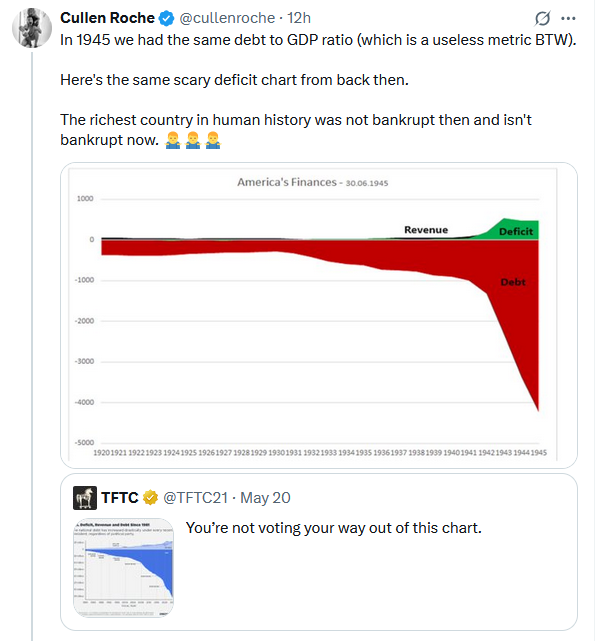S&P 500 struggles for direction as investor await inflation data
Fiscal worries, the US dollar’s imminent demise, and soaring tariff-related inflation expectations are among the concerns driving bond yields higher. At the same time, inflation, the historical determinant of US Treasury yields, continues normalizing. As a bond investor, it is difficult to reconcile facts that argue for lower yields and narratives pointing in the opposite direction.
In all markets, narratives win the day. In other words, market narratives dictate short-term price behavior, whether correct or not. Sometimes, narratives persist for months or longer. Understanding the differences between the narratives and the fundamentals is critical for those trading and investing in bonds. That is a meaty topic. Accordingly, we will expand on it in our blog article next Wednesday.
In the meantime, the two graphs below provide a road map for the current bond situation.
The first graph shows the long-term relationship between 10-year UST yields and inflation, inflation expectations, and economic growth. Based on those factors, yields are 64 (4.58-3.94) basis points above fair value. Below it, the 10-year yield has been stuck in a 1.50% trading range for over two years.
The bottom of the range is close to fair value, and the top of the range is 5%. Narratives can push yields higher. However, the 5% yield level should generate significant interest from long-term bond investors and protection from the Fed and/or Treasury.
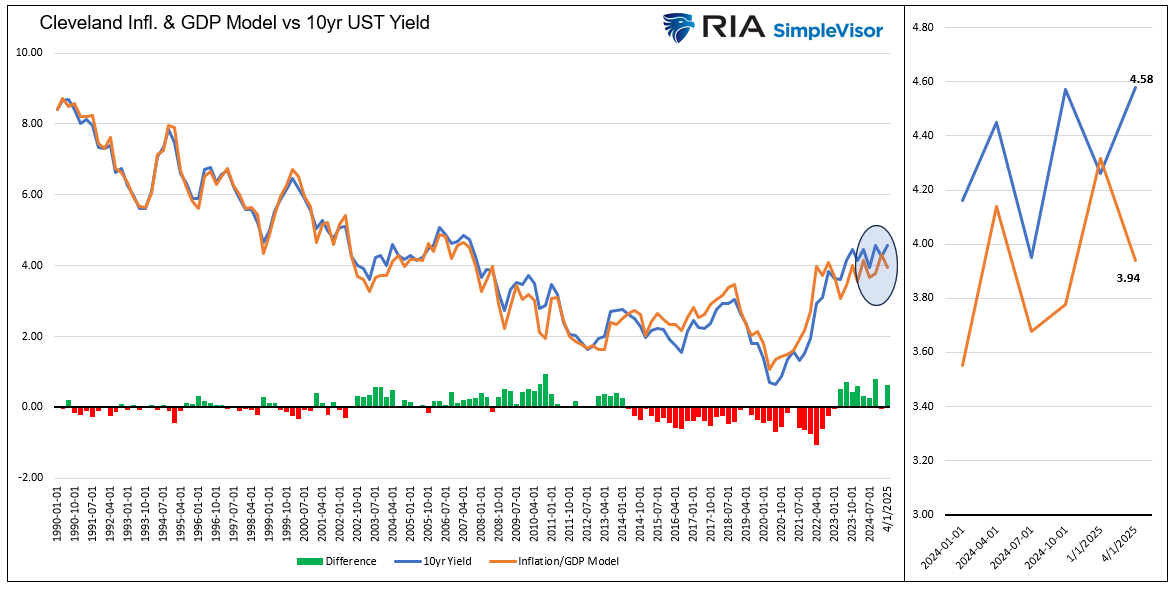
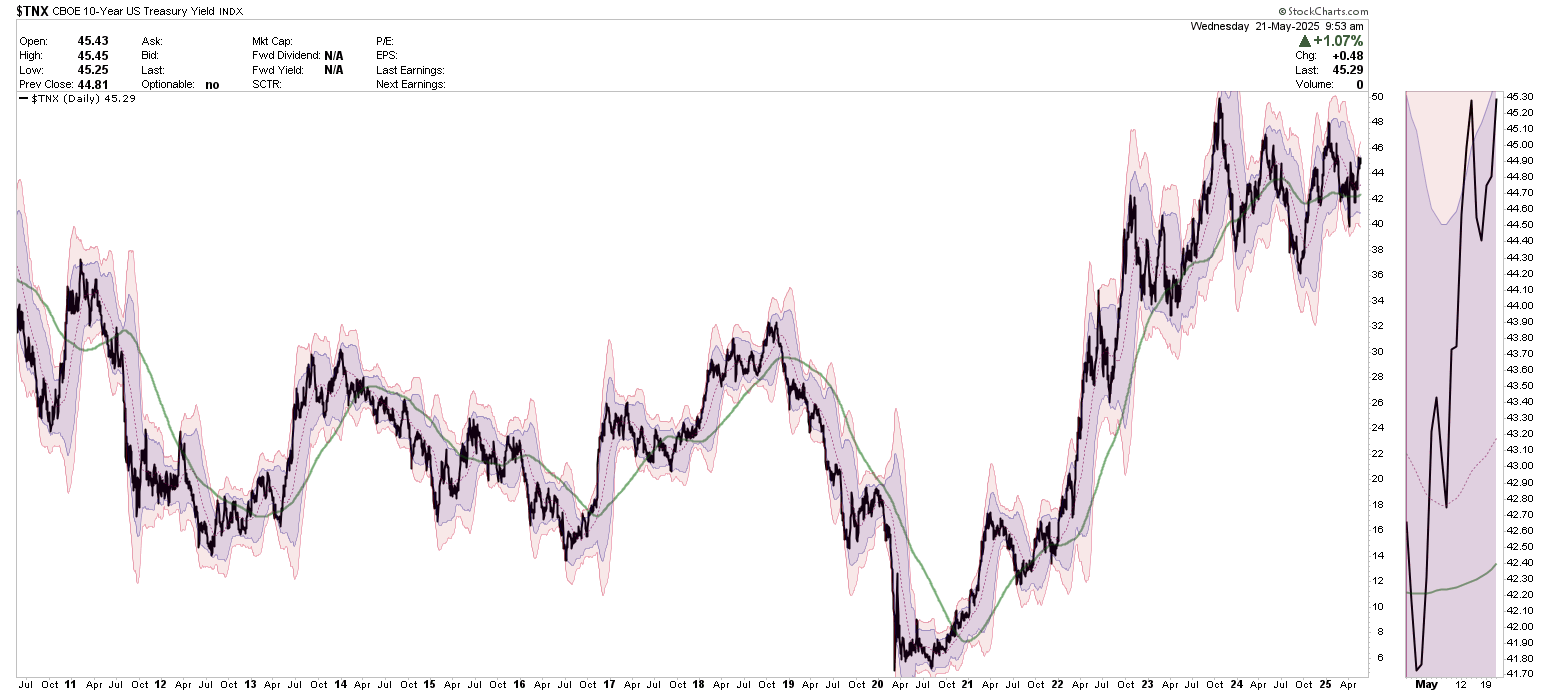
Market Trading Update
Yesterday, we discussed the market’s technical overbought condition and trading an “unstoppable bull market” in stocks. (We will discuss that topic further in this weekend’s #BullBearReport.) An important consideration concerning the recent market rally is Bob Farrell’s Rule #9: “When all experts agree, something else tends to happen.”
Notably, the same applies to every asset class, such as the bond market. As Michael Lebowitz noted above, bond market traders have all latched onto a theme of runaway deficits as the reason for the recent rise in rates. No matter where you look, every tick higher in rates as of late is associated with concerns over the debt and the deficit.
However, as shown, the deficit is about 1/2 of the level it was in 2021. Nonetheless, the increase in the deficit, while it has been going on for 40-years, has become the latest topic to spark traders positioning against bonds.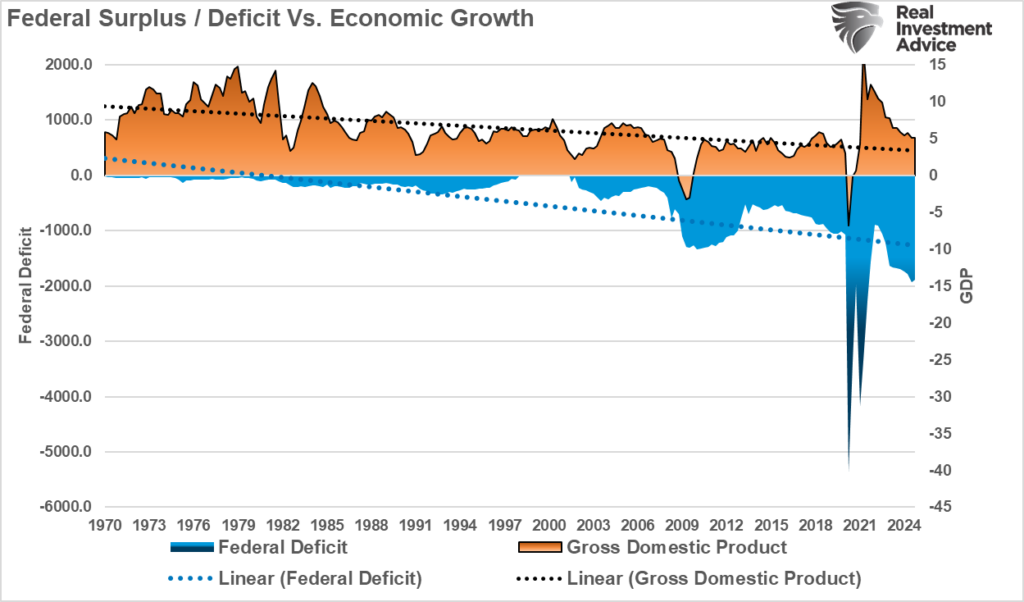
In other words, as Michael notes, the “narrative” drives bond traders to make increasingly large short bets against bonds, pushing higher yields. As long as traders can control the narrative, they can control the price.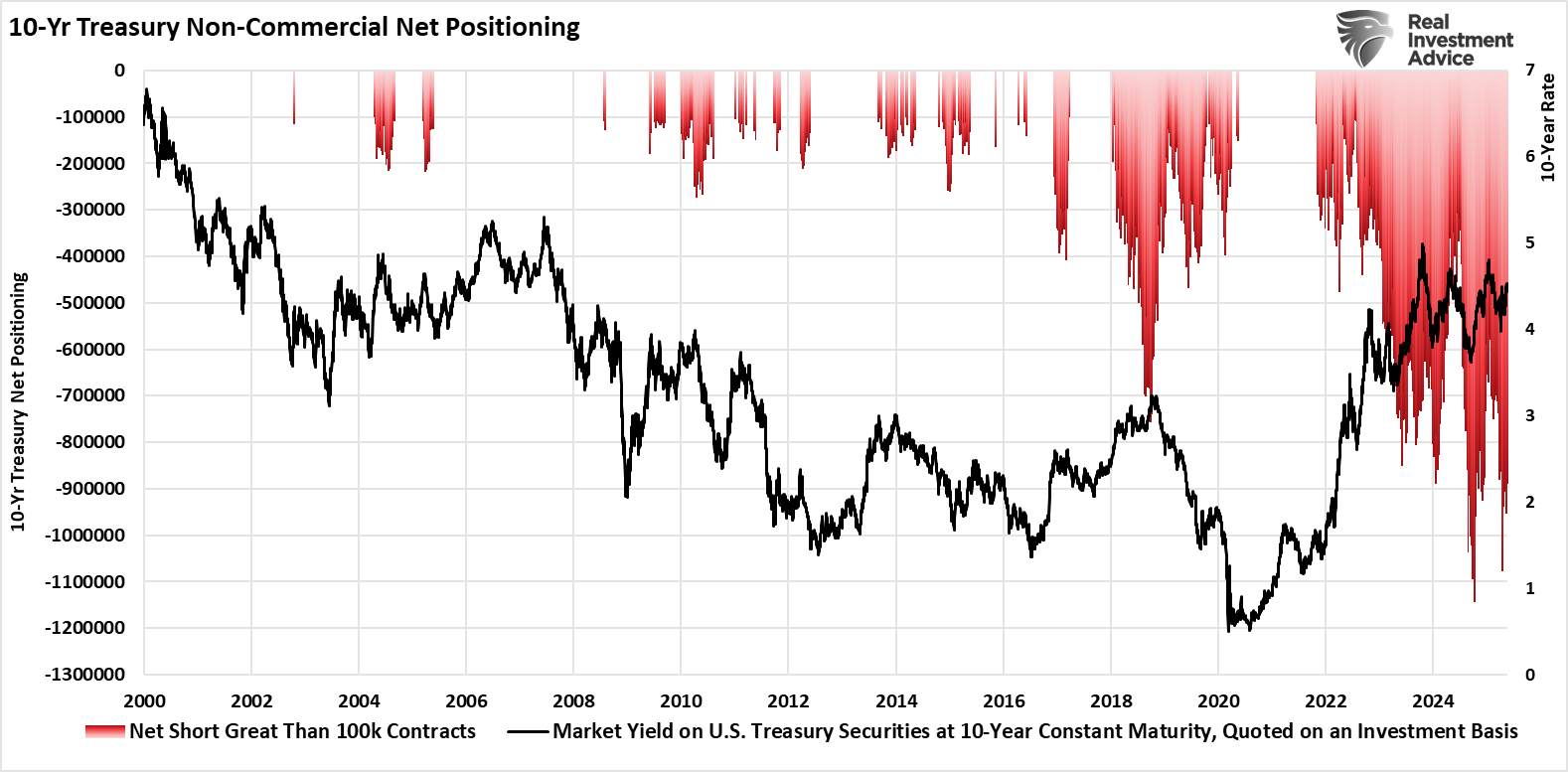
However, in the longer term, fundamentals will drive the price of yields. More importantly, the deficit narrative will collapse if economic growth strengthens due to deregulation, tax cuts, or other growth-inducing policies being implemented. Of course, we also can not rule out Central Bank intervention to lower yields to support the economy’s health and the financial banking system. In other words, there is a high degree of probability that the narratives of today will fail to come to reality.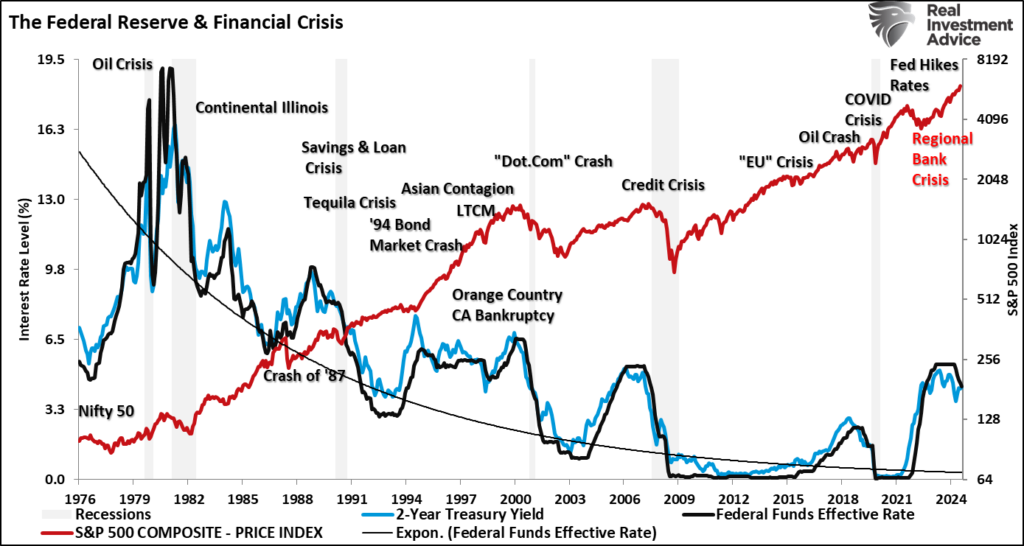
The technical backdrop also tells us that. In the longer term, like stocks, interest rates can only move so far before something happens, leading to a recessionary or event-driven outcome (lower yields as shown above). But technically, using a monthly chart for long-term analysis, bonds are at overbought levels that have only occurred four times previously. Each of those previous periods corresponded to the onset of an “event” and lower yields.
Furthermore, the massive MACD sell signal also suggests lower yields will come, and given the tightening price channel on yields, a break below 4% currently will likely spark a good deal of short-covering in bonds, driving yields toward 3% or lower.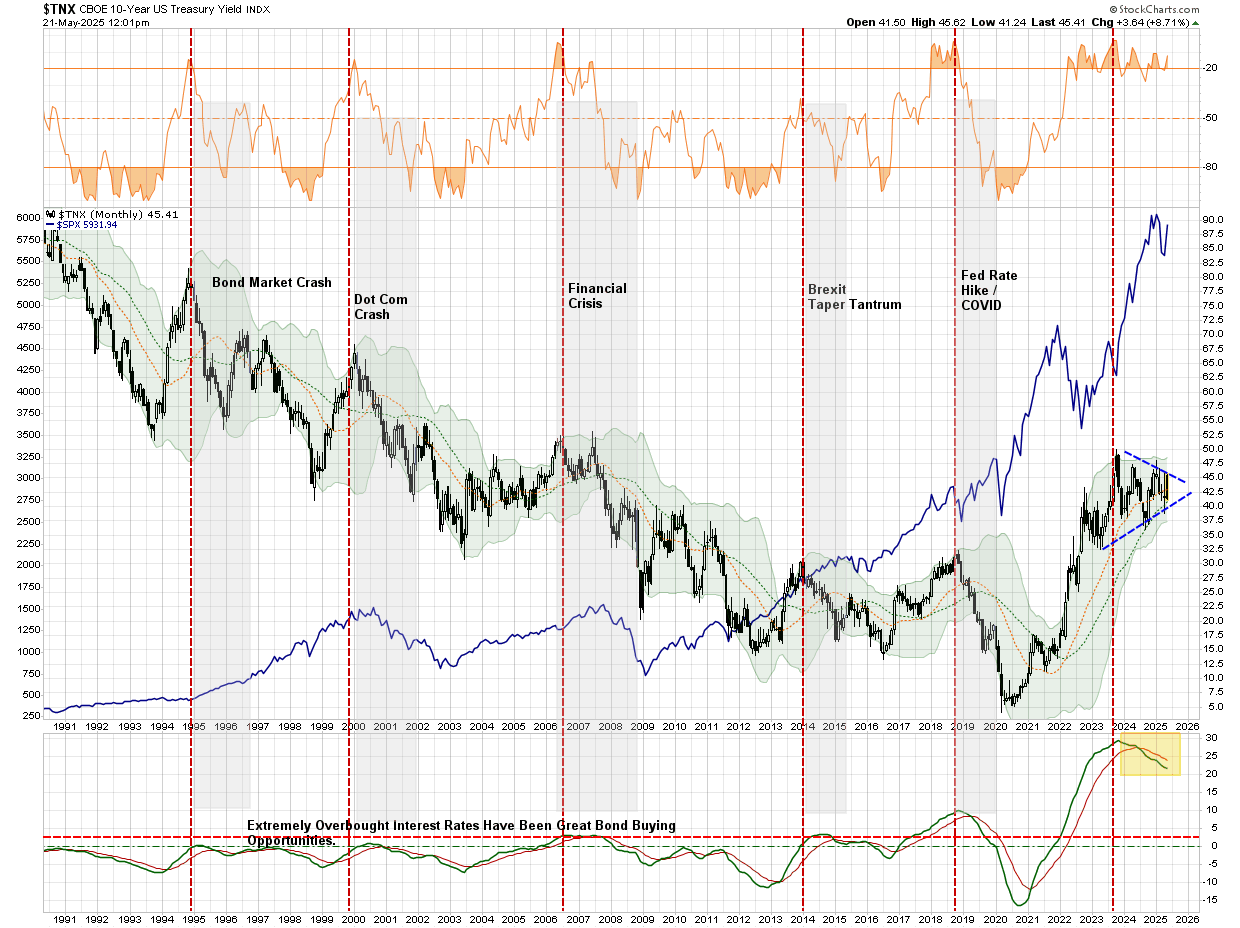
One important note is that this is a MONTHLY chart, so the analysis is VERY slow to move. Therefore, in the short term, days and weeks, yields will continue to be driven by the narrative. However, eventually, as is always the case, that “bearish narrative” will fail. When fundamentals regain control, there will be many traders caught with their “shorts down.”
Inflation Narrative
Need we say any more about why yields are rising than sharing the graph below? Consumers expect that inflation will top the levels seen in 2022. While the graph below is certainly scary, there is little statistical evidence that consumers can accurately forecast inflation. To wit, expected inflation during 2021 and 2022 lagged actual inflation.
More importantly, inflation during 2021 and 2022 was the result of excessive stimulus, including checks sent directly to consumers and a crippled supply chain. We have neither of those circumstances today. Instead, fears of tariff-related inflation are the concern.
While it’s too early to gauge the impact tariffs will have on prices, thus far, we have seen CPI and PPI come in below expectations. We suspect that when inflation expectations start to turn back down, bond yields will follow.
Lastly, the second graph shows that inflation expectations have a significant political bias, further blurring how much we should read into consumer expectations.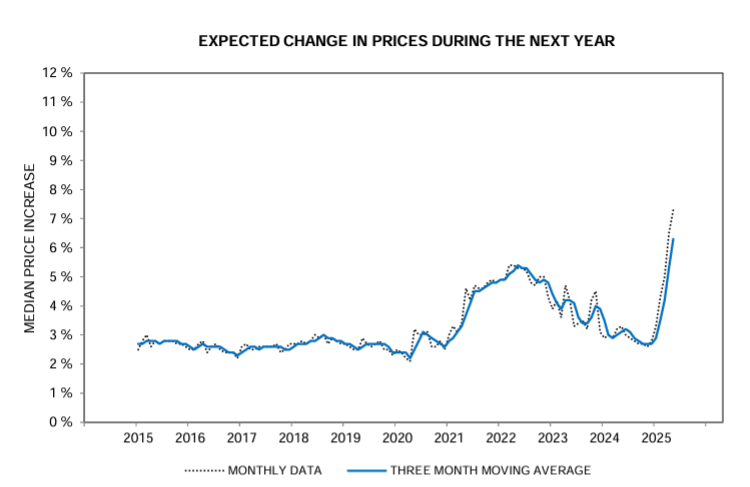
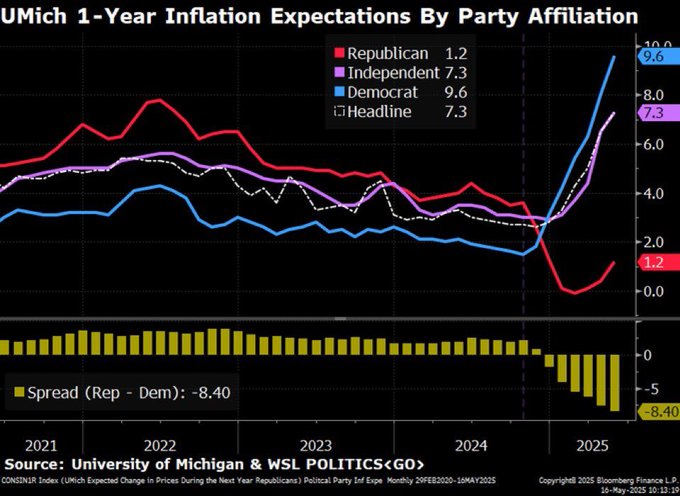
What To Watch Today
Earnings

Economy

Tweet of the Day
